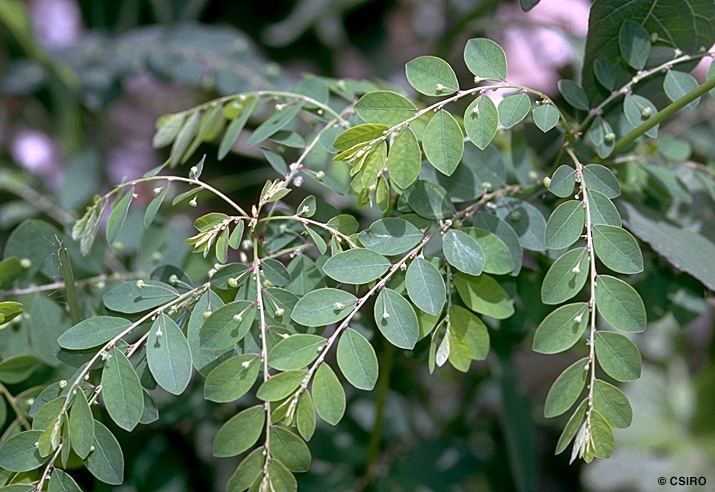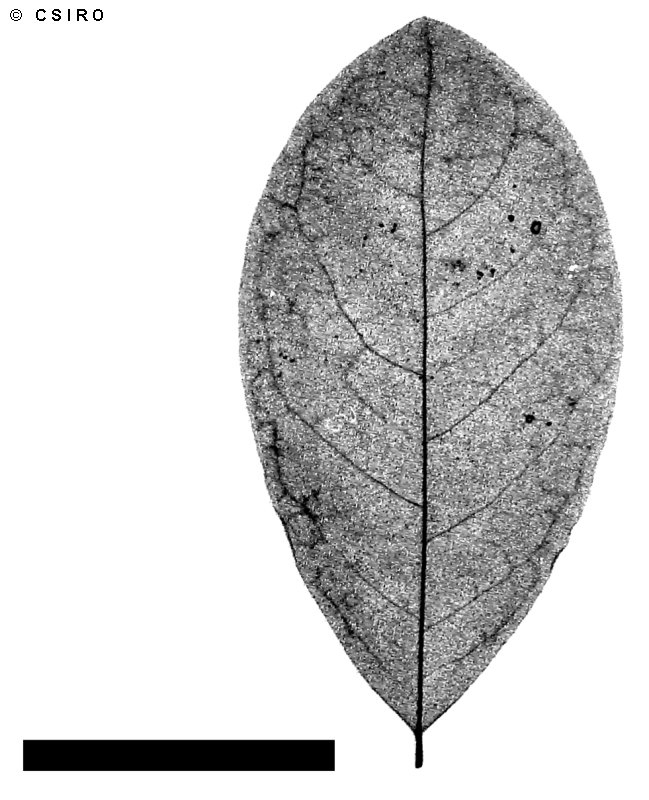Australian Tropical Rainforest Plants - Online edition
Phyllanthus tenellus Roxb.




Roxburgh, W. (1832) Flora Indica (ed. Carey) 3: 668. Type: Introduced from Mauritius in 1802, by Captain Tennant.
Phyllanthus
Usually flowers and fruits as a herb or as a shrub to about 1 m tall.
Leaf blades about 0.8-2 x 0.5-1.1 cm, produced on lateral shoots which resemble compound leaves. Leaves tend to be alternate and not spirally arranged on the twigs. Leaves thin and fragile, glaucous on the underside. Venation not obvious, but the lateral veins form loops well inside the blade margin. Stipules about 1-2 mm long, acuminate at the apex, persistent.
Flowers quite small, about 2 mm diam. on slender pedicels about 3 mm long. In the male flower, petals absent or represented by translucent gland-like structures alternating with the sepals. In the female flower, petals absent or represented by a thin glandular disk below the ovary. Ovules two per locule. Styles three, stigmas six or stigmas three and bilobed.
Cotyledons obovate, about 2 x 1 mm. At the tenth leaf stage: leaves produced on short lateral shoots resembling compound leaves. Stipules filiform or narrowly triangular, about 1 mm long. Seed germination time 33 days.
An introduced weed originally from Mauritius, now naturalised in WA, NT, CYP, NEQ, CEQ and southwards as far as coastal south-eastern New South Wales. Altitudinal range from sea level to about 800 m. Frequently grows around towns and settlements but also found in disturbed areas in rain forest, monsoon forest and vine thickets.
Food plant for the larval stages of the Common Grass Yellow Butterfly. Common & Waterhouse (1981).
This species may have medicinal properties.





